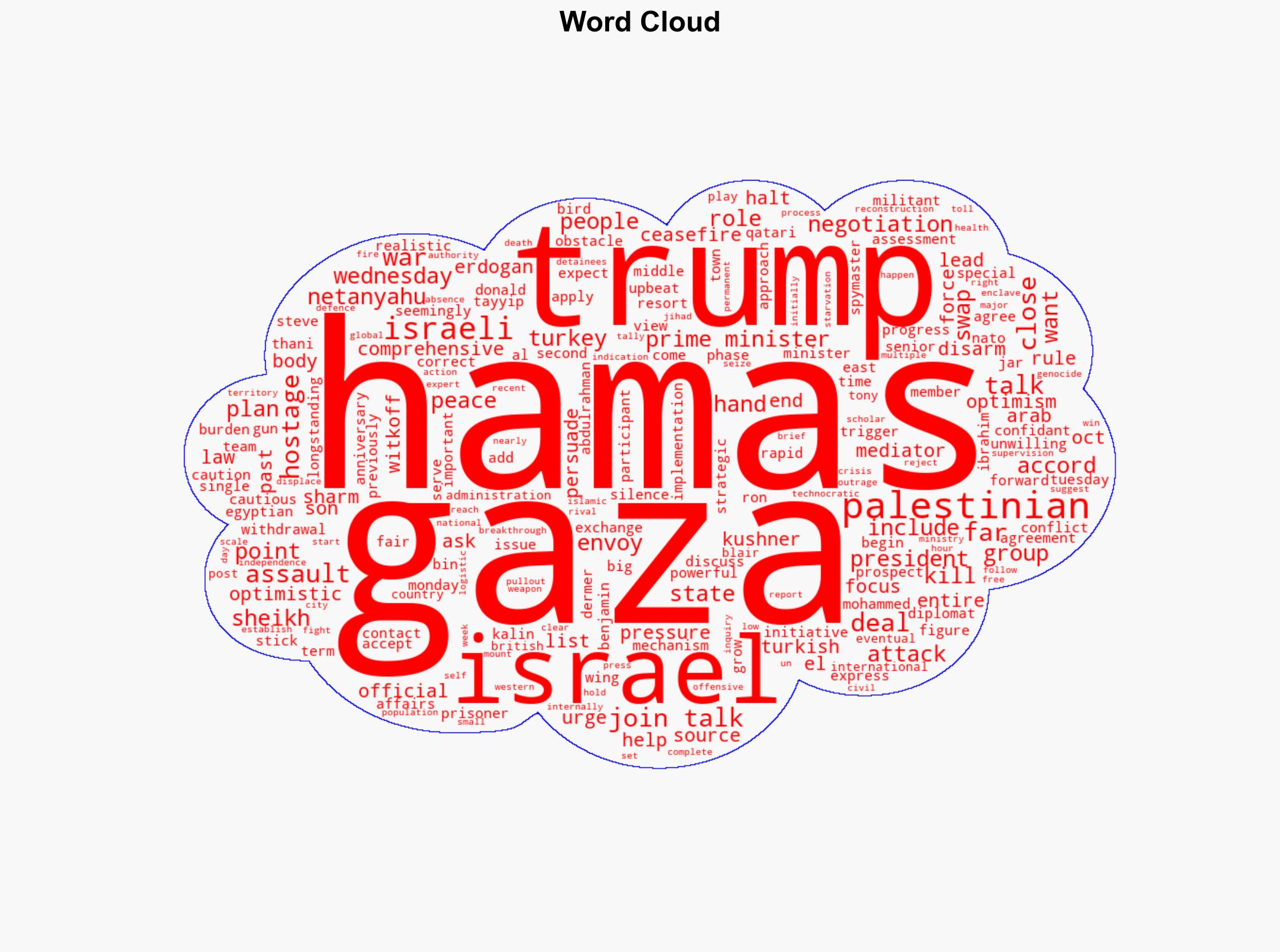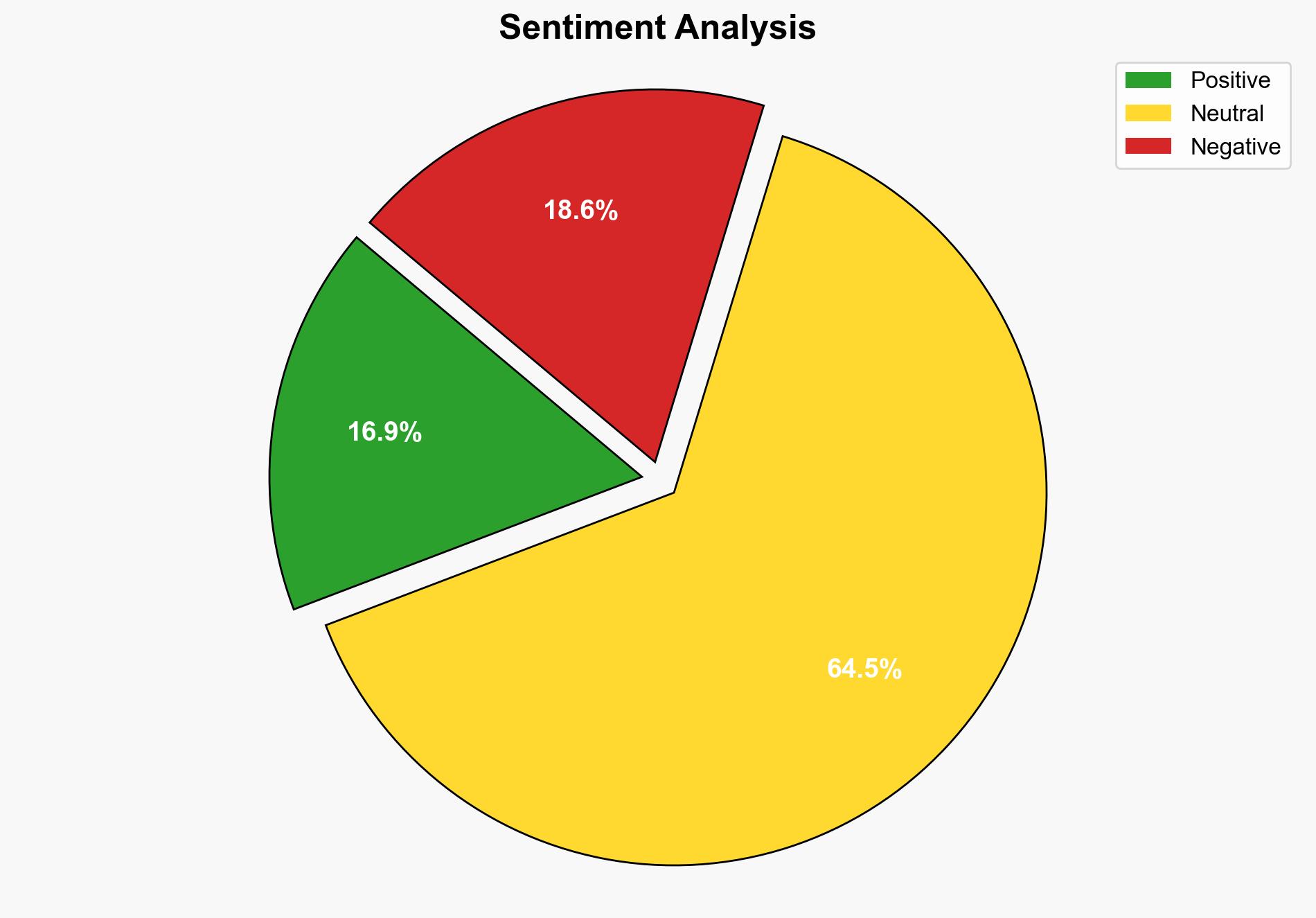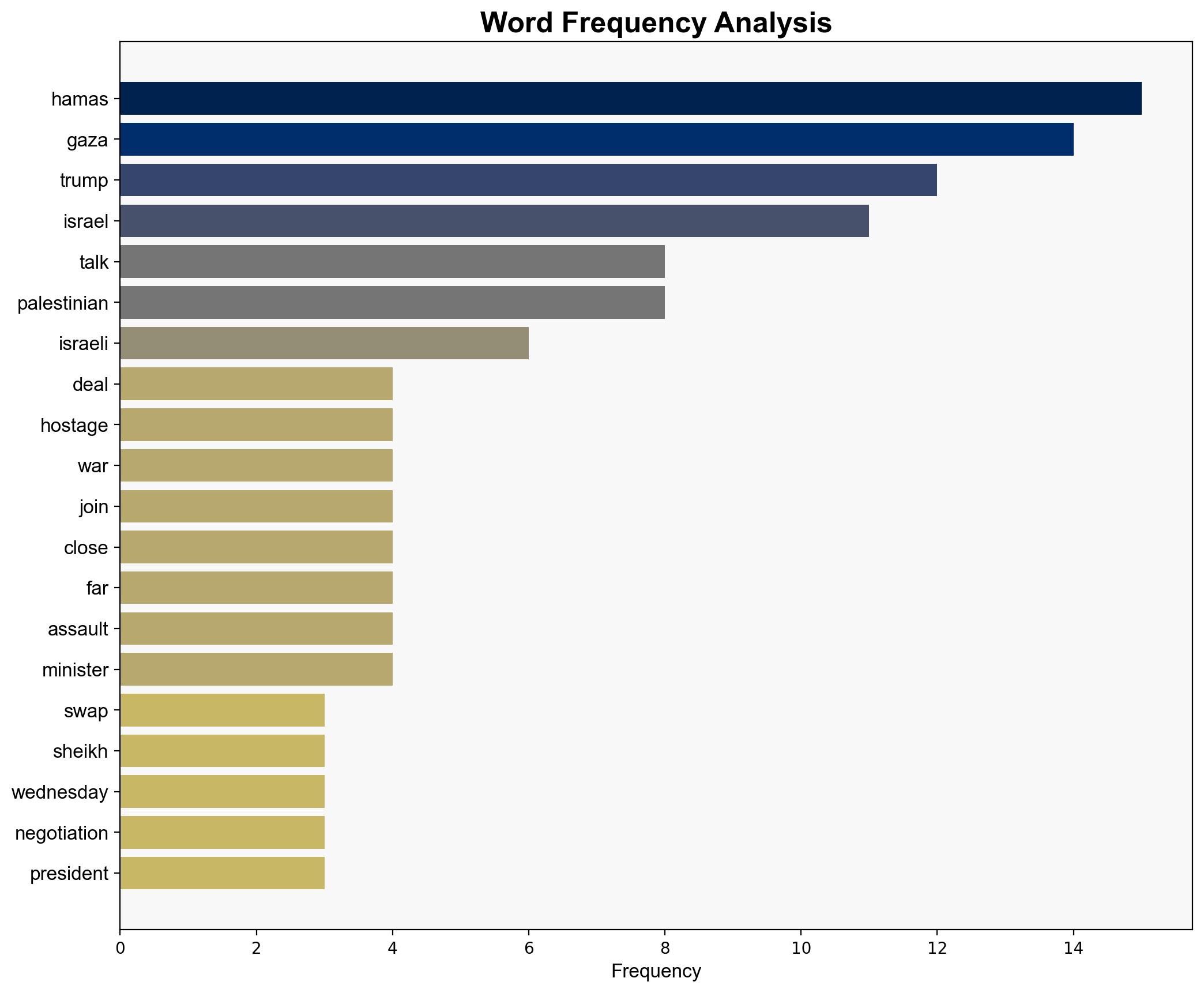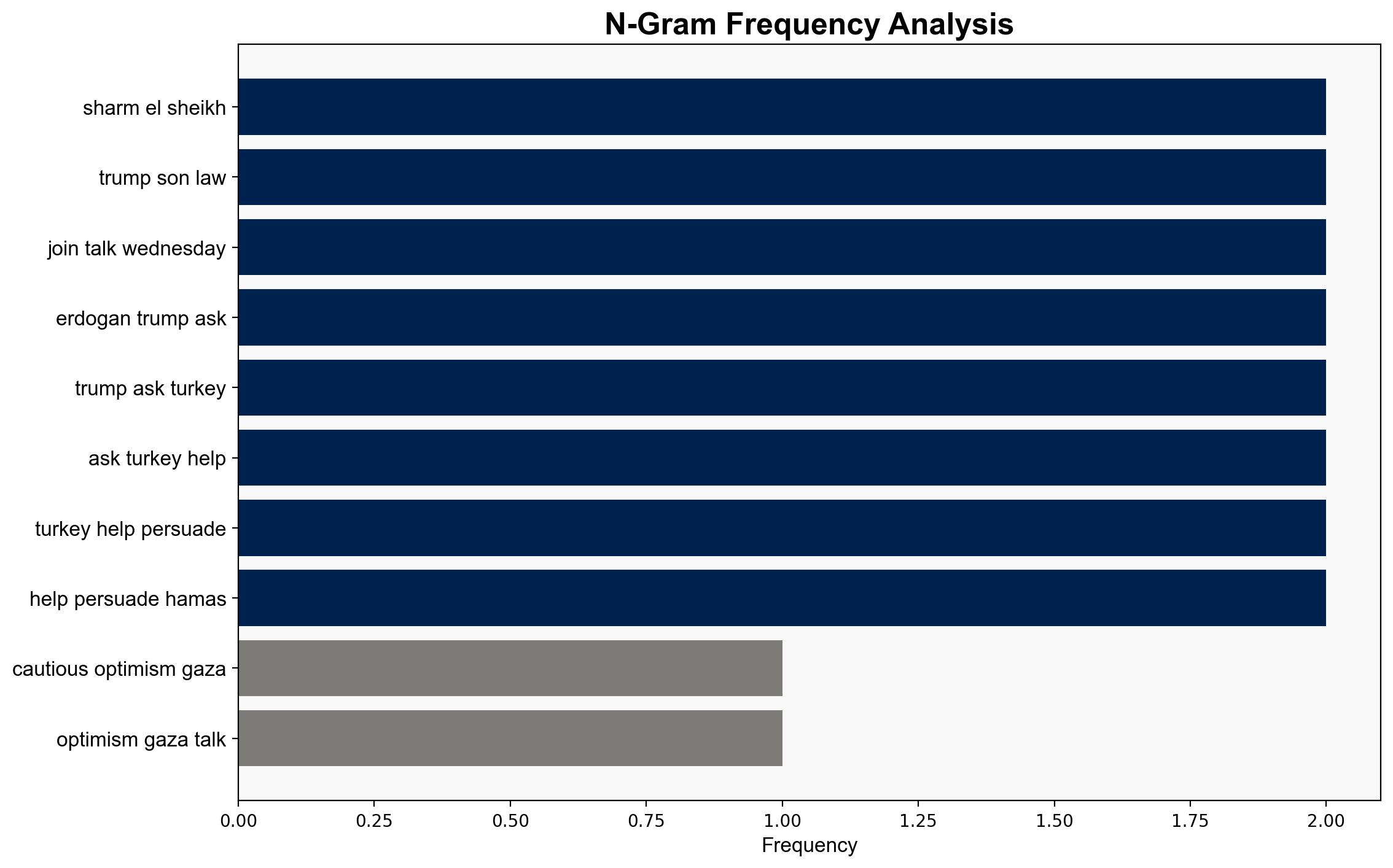Cautious optimism at Gaza talks as Hamas hands over lists of names for swap deal – CNA
Published on: 2025-10-08
Intelligence Report: Cautious optimism at Gaza talks as Hamas hands over lists of names for swap deal – CNA
1. BLUF (Bottom Line Up Front)
The most supported hypothesis is that the negotiations will lead to a temporary ceasefire and a limited prisoner exchange, but not a comprehensive peace agreement. Confidence level: Moderate. Recommended action: Encourage continued diplomatic engagement while preparing for potential escalation if talks fail.
2. Competing Hypotheses
1. **Hypothesis A**: The negotiations will result in a comprehensive peace agreement, including a permanent ceasefire, Israeli withdrawal, and significant prisoner exchange.
– **Supporting Evidence**: Optimism from key negotiators, involvement of influential international figures, and Hamas’s willingness to provide lists for a swap deal.
– **Contradictory Evidence**: Historical reluctance of Hamas to disarm, ongoing Israeli military actions, and complex geopolitical interests.
2. **Hypothesis B**: The negotiations will lead to a temporary ceasefire and limited prisoner exchange, but not a comprehensive peace agreement.
– **Supporting Evidence**: Continued Israeli military presence, Hamas’s refusal to disarm, and the focus on immediate humanitarian concerns rather than long-term solutions.
– **Contradictory Evidence**: Diplomatic pressure from international actors and the urgency of the humanitarian crisis could push for more substantial outcomes.
3. Key Assumptions and Red Flags
– **Assumptions**: Both parties are negotiating in good faith and have the capacity to enforce agreements. International mediators can effectively influence both sides.
– **Red Flags**: Historical failures of similar negotiations, potential hidden agendas of involved parties, and the possibility of external actors disrupting the process.
– **Blind Spots**: Underestimation of internal political pressures on Hamas and Israel, and the potential for unforeseen regional developments affecting negotiations.
4. Implications and Strategic Risks
– **Implications**: A temporary ceasefire could alleviate immediate humanitarian concerns but may not address underlying issues, leading to future conflicts.
– **Strategic Risks**: Failure of talks could escalate violence, increase regional instability, and strain international relations. Economic impacts on reconstruction efforts and potential cyber threats from involved parties.
5. Recommendations and Outlook
- Encourage sustained diplomatic efforts with a focus on incremental progress rather than comprehensive solutions.
- Prepare contingency plans for potential escalation, including humanitarian aid and conflict mediation resources.
- Scenario Projections:
- **Best Case**: Successful temporary ceasefire and prisoner exchange, leading to gradual peace talks.
- **Worst Case**: Breakdown of talks, resulting in intensified conflict and regional destabilization.
- **Most Likely**: Temporary ceasefire with limited prisoner exchange, followed by prolonged negotiations.
6. Key Individuals and Entities
– Donald Trump
– Jared Kushner
– Steve Witkoff
– Ron Dermer
– Sheikh Mohammed bin Abdulrahman Al Thani
– Ibrahim Kalin
– Benjamin Netanyahu
– Tayip Erdogan
7. Thematic Tags
national security threats, regional focus, diplomacy, conflict resolution, humanitarian crisis





